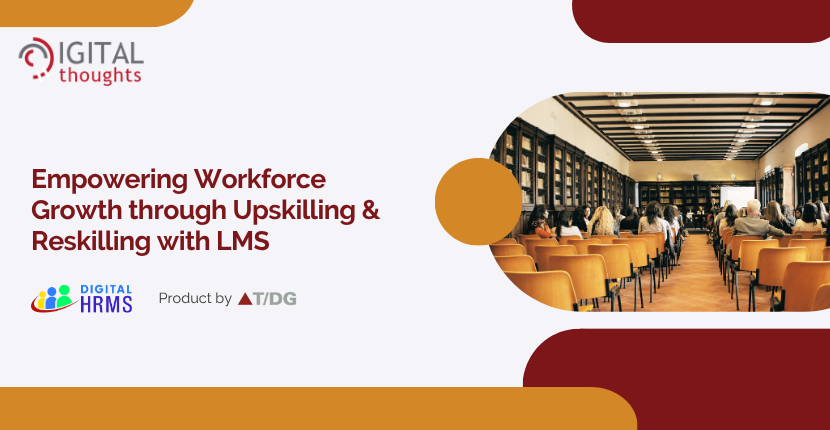Optimizing Talent: Upskilling and Reskilling through Learning Management System (LMS)

In today’s fast-paced professional world, continuous learning has shifted from being a nice-to-have to an absolute must. Companies are starting to realize that to stay ahead of the game, they need to invest in their employees' growth. At the heart of this effort are upskilling and reskilling—strategies designed to help employees tackle new challenges and embrace emerging technologies.

The Evolving Workforce Landscape
With rapid technological advancements, the way we work is changing dramatically. Automation and artificial intelligence are transforming job roles, making some skills outdated while creating a need for new ones. This ever-changing landscape calls for a workforce that is flexible and ready to adapt.
Understanding Upskilling and Reskilling
Upskilling is all about enhancing an employee’s current skill set to boost their performance in their existing role, while reskilling prepares them for a completely different position. Both strategies are crucial; upskilling helps employees take on more complex tasks, and reskilling promotes internal mobility, which can progress tracking and lessen the need to hire externally.
The Role of Learning Management Systems (LMS)
Learning Management Systems have become essential tools for driving upskilling and reskilling efforts. By centralizing training resources, LMS platforms allow organizations to provide consistent, scalable, and personalized learning experiences as well as automation. Features like progress tracking, assessments, and feedback mechanisms significantly enhance the effectiveness of training programs.
Implementing Effective LMS Strategies
To get the most out of an LMS, organizations should start by evaluating their current skill gaps. This means analyzing the capabilities of their workforce and pinpointing areas that need development. From there, customized learning paths can be created to fill these gaps, ensuring that training is both relevant and impactful.
Measuring Success in Upskilling and Reskilling
Evaluating how effective training programs are, is really important. Key performance indicators like course completion rates, assessment scores, and post-training performance metrics give us valuable insights into how well upskilling and reskilling efforts are working. Plus, getting regular feedback from participants helps us keep improving continuously and achieve employee engagement.
Overcoming Challenges
When it comes to rolling out new training initiatives, there can be some pushback. Employees might feel unsure about adopting new learning methods or question how relevant the content is to their roles. To ease these concerns, organizations should create a culture that truly values learning, clearly communicate the benefits, and offer support throughout the training journey through structured training schedule.
Case Studies and Success Stories
Many organizations have successfully used LMS platforms to boost their workforce capabilities and Performance Management. For example, a tech company rolled out a comprehensive upskilling program via their LMS, leading to improved employee skills and lower turnover rates. These success stories highlight the real benefits of strategic learning initiatives.
Future Trends in Workforce Development
As the workplace keeps changing, so will the skills employees need. New technologies will require fresh skills, making continuous learning a top priority. Organizations need to stay ahead of these trends by proactively updating their training programs to meet future demands.
Digital HRMS LMS Module: A Comprehensive Solution for Workforce Development
To successfully roll out upskilling and reskilling initiatives, organizations need a strong and flexible Learning Management System. The Digital HRMS LMS module is designed to provide a thorough solution that caters to a variety of training needs and provides a structured training schedule with clear post-training performance metrics.
Key Features of the Digital HRMS LMS Module:
- Quarterly Training Calendar: This feature gives employees a clear training schedule, making it easier for them to plan and manage their time effectively.
- Online Training Access: Employees can join training sessions whenever it suits them, encouraging flexibility and ongoing learning.
- Pre and Post Assessments: These assessments help gauge knowledge gained and the effectiveness of training, ensuring that personalized learning goals are achieved.
- Integration with Performance Management: This aligns training programs with performance metrics, enabling managers to suggest courses based on individual performance data.
- Training Requirement Collection: This feature allows organizations to gather training needs directly from employees, ensuring that the learning content is relevant and focused.
Optimizing talent through upskilling and reskilling isn’t just a reaction to current needs; it’s a strategic necessity. By leveraging Learning Management Systems and Artificial Intelligence, organizations can build a resilient, adaptable, and skilled workforce, ready to tackle tomorrow's challenges. Embracing a culture of lifelong learning through employee training will be key to achieving lasting success in our ever-evolving professional landscape.
By utilizing the Digital HRMS LMS module, organizations can simplify their training processes, boost employee engagement, and cultivate a culture of continuous improvement. This integrated approach not only tackles existing skill gaps but also equips the workforce for future challenges, paving the way for sustained growth and success. Know more about Learning Trends Addressed by an Efficient Employee Training Management System or LMS.
